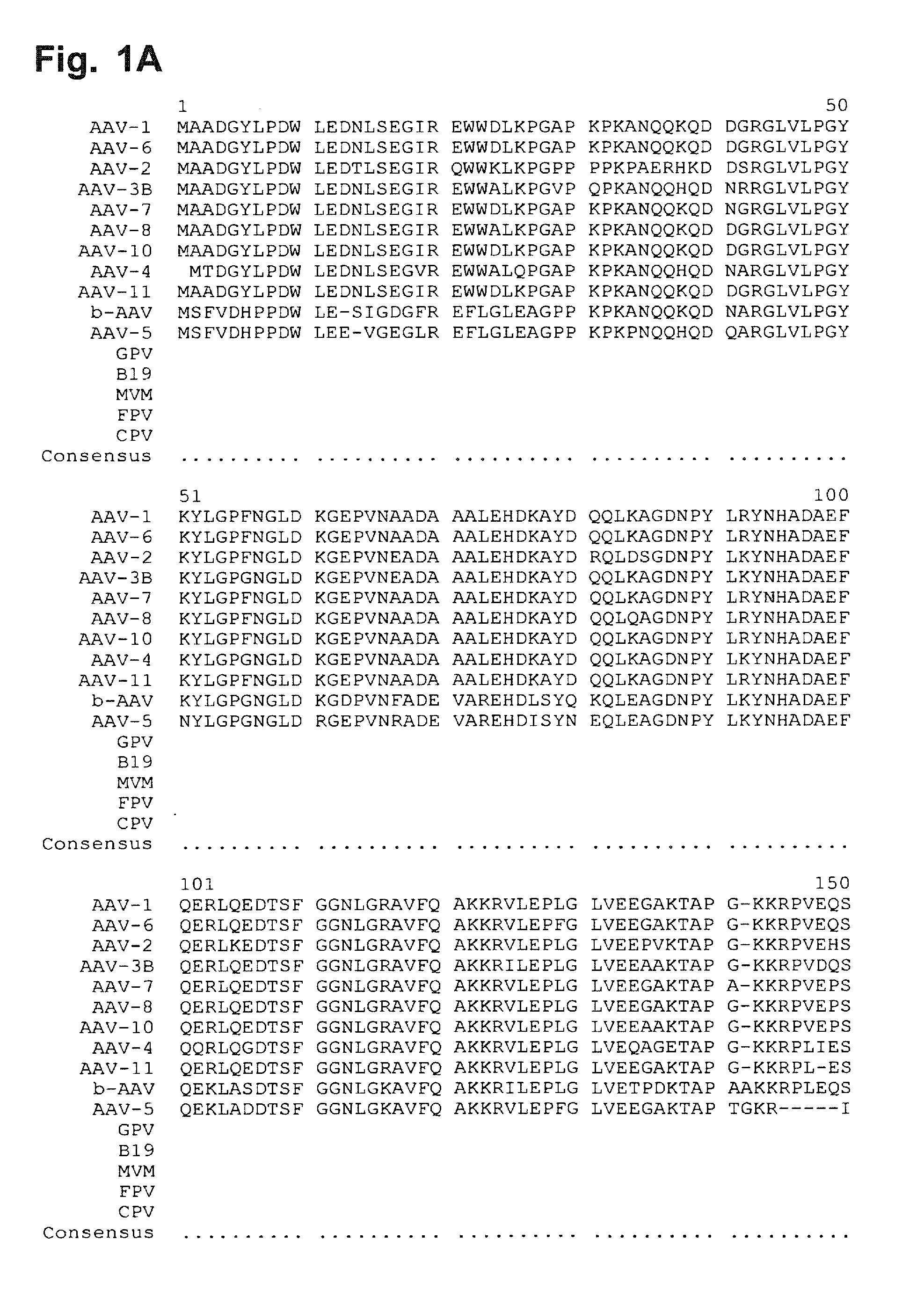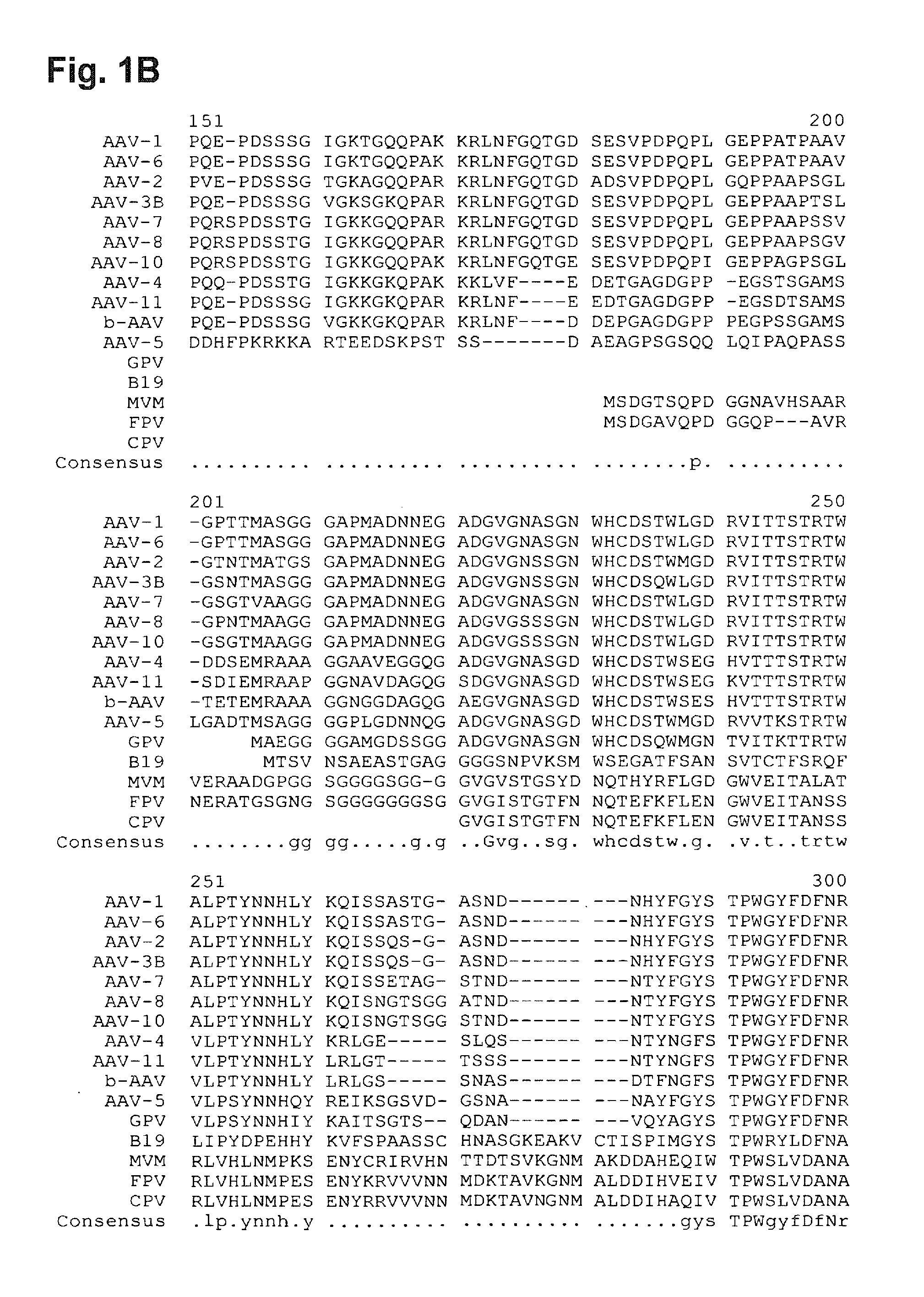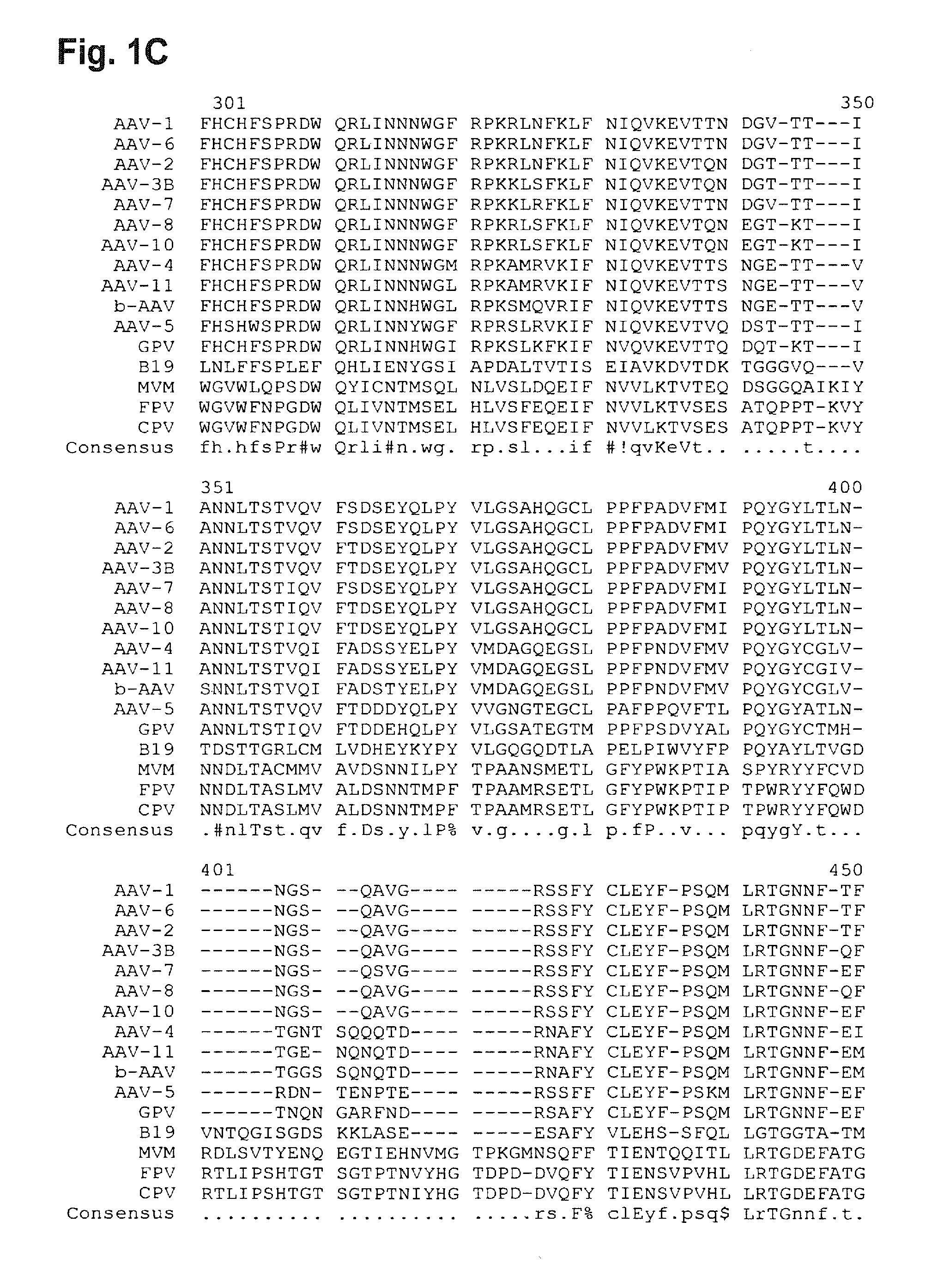Mutated parvovirus structural proteins as vaccines
a parvovirus and structural protein technology, applied in the field of parvovirus mutated structural proteins, can solve the problems of increasing the overall treatment cost, and limiting the efficacy of passive antibody therapy
- Summary
- Abstract
- Description
- Claims
- Application Information
AI Technical Summary
Benefits of technology
Problems solved by technology
Method used
Image
Examples
Embodiment Construction
[0301]The following examples exemplify the invention for AAV, especially for AAV2. Due to the general similarities within the structures of the adeno-associated viruses and other parvoviruses the invention can be easily transferred to other parvoviruses.
1. Generation of an AAV Library
[0302]The cloning of the AAV library and the production of AAV capsid-modified viral particles is described by Perabo et al. (Perabo et al., 2003). The AAV library consists of approximately 4×106 capsid-modified viral particles carrying random insertions of 7 amino acids at position I-587 of the AAV capsid protein. The choice of a 7-mer was empirical and was dictated by the need to insert a sequence long enough to generate an acceptable amount of diversity, but without impairing the stability of the capsid. Since typical B-cell epitopes are in general composed of 5 or 6 amino acids in length (US 2004 / 0228798), the peptide sequences of the library are sufficient to define B-cell epitopes that are capable...
PUM
| Property | Measurement | Unit |
|---|---|---|
| volume | aaaaa | aaaaa |
| volume | aaaaa | aaaaa |
| volume | aaaaa | aaaaa |
Abstract
Description
Claims
Application Information
 Login to View More
Login to View More - R&D
- Intellectual Property
- Life Sciences
- Materials
- Tech Scout
- Unparalleled Data Quality
- Higher Quality Content
- 60% Fewer Hallucinations
Browse by: Latest US Patents, China's latest patents, Technical Efficacy Thesaurus, Application Domain, Technology Topic, Popular Technical Reports.
© 2025 PatSnap. All rights reserved.Legal|Privacy policy|Modern Slavery Act Transparency Statement|Sitemap|About US| Contact US: help@patsnap.com



